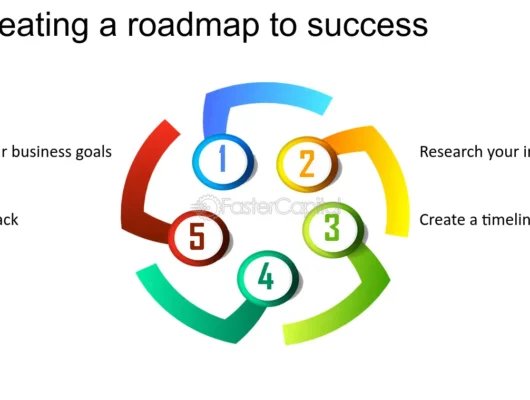In the competitive landscape of digital marketing, reaching the right audience at the right time is crucial for driving conversions and engagement.
While Twitter is a powerful platform for brand awareness and real-time interaction, Twitter retargeting takes your marketing efforts to the next level by allowing you to re-engage users who have already interacted with your brand.
Whether they’ve visited your website, engaged with your tweets, or shown interest in your content, Twitter retargeting ensures your message stays top-of-mind.
In this article, we’ll explore what Twitter retargeting is, how it works, and how you can leverage it to drive better results for your business.
Section 1: What is Twitter Retargeting?
Before diving into strategies, it’s important to understand the fundamentals of Twitter retargeting:
- Definition: Twitter retargeting, also known as Twitter remarketing, is a digital marketing strategy that allows you to show ads to users who have previously interacted with your brand. This can include users who have visited your website, engaged with your tweets, or interacted with your content in other ways.
- How It Works: Twitter uses tracking pixels and cookies to monitor user behavior both on Twitter and across the web. When someone takes a specific action (like visiting your website or watching your video), they are added to a retargeting audience. You can then create tailored ads to re-engage these users, encouraging them to take the next step, such as making a purchase or signing up for a newsletter.
- Why It’s Effective: Retargeting focuses on users who are already familiar with your brand, making them more likely to convert. These users have shown interest in your products or services, so your ads are more relevant and impactful.
Section 2: Setting Up Twitter Retargeting
To effectively use Twitter retargeting, you’ll need to set up and configure your retargeting campaigns:
- Twitter Pixel Installation:
- What It Is: The Twitter pixel is a piece of code that you add to your website. It tracks visitor behavior and helps you build custom audiences for retargeting.
- How to Install: To install the Twitter pixel, log into your Twitter Ads account, navigate to the “Tools” section, and select “Conversion Tracking.” Generate the pixel code and add it to the header of your website. This code will start collecting data on your visitors, allowing you to create retargeting campaigns.
- Creating Custom Audiences:
- Website Visitors: Create a retargeting audience based on users who have visited your website or specific pages. For example, you can target users who visited your pricing page but didn’t complete a purchase.
- Engaged Users: Target users who have engaged with your tweets, such as liking, retweeting, or commenting. This audience has already shown interest in your content, making them prime candidates for retargeting.
- Email List Integration: If you have an email list, you can upload it to Twitter to create a custom audience. This allows you to retarget your existing customers or leads on Twitter.
Section 3: Best Practices for Twitter Retargeting
To maximize the effectiveness of your Twitter retargeting campaigns, follow these best practices:
- Segment Your Audience: Not all retargeting audiences are the same. Segment your audience based on specific actions or behaviors (e.g., users who abandoned their cart vs. those who engaged with a tweet). Tailor your ads to each segment for more personalized messaging.
- Craft Compelling Ad Copy: Since your audience is already familiar with your brand, focus on creating ad copy that drives action. Use strong calls-to-action (CTAs) and highlight unique selling points or offers to encourage conversions.
- Use Eye-Catching Visuals: Visual content is crucial on Twitter. Use high-quality images, GIFs, or videos that grab attention and convey your message quickly. Ensure your visuals align with the messaging and goal of your retargeting campaign.
- Test and Optimize: Retargeting campaigns should be continuously tested and optimized. Experiment with different ad formats, copy, and CTAs to see what resonates best with your audience. Use A/B testing to refine your approach over time.
- Frequency Capping: To avoid overwhelming your audience, set frequency caps on your ads. This limits the number of times a single user sees your ad, preventing ad fatigue and maintaining a positive brand experience.
Section 4: Examples of Effective Twitter Retargeting Campaigns
To inspire your own retargeting efforts, here are some examples of how businesses can effectively use Twitter retargeting:
- Abandoned Cart Campaign: An e-commerce brand can retarget users who added products to their cart but didn’t complete the purchase. The retargeting ad might include a reminder of the items left in their cart, paired with a limited-time discount to incentivize the purchase.
- Content Engagement Campaign: A B2B company could retarget users who engaged with their recent blog post or whitepaper on Twitter. The follow-up ad could promote a webinar or a more in-depth piece of content, guiding users further down the sales funnel.
- Event Reminder Campaign: If your business is hosting an event, you can retarget users who viewed the event page but didn’t register. A retargeting ad can emphasize the benefits of attending or offer an exclusive early-bird discount.
Section 5: Measuring Success and Adjusting Your Strategy
To ensure your Twitter retargeting campaigns are delivering results, it’s essential to monitor performance and make data-driven adjustments:
- Key Metrics to Track:
- Conversion Rate: Measure the percentage of users who take the desired action after seeing your retargeting ad (e.g., completing a purchase, signing up for a newsletter).
- Click-Through Rate (CTR): Track how often users click on your retargeting ads. A high CTR indicates that your ad is relevant and engaging.
- Cost Per Conversion: Calculate the cost of acquiring a conversion through your retargeting campaign. This helps you determine the return on investment (ROI) of your efforts.
- Adjusting Your Strategy:
- Refine Audience Segments: If certain audience segments are underperforming, consider refining your criteria or creating new segments to better target users.
- Tweak Ad Copy and Visuals: If your ads aren’t resonating, experiment with different copy, CTAs, or visuals. Even small changes can have a big impact on performance.
- Reevaluate Frequency: If your conversion rate starts to decline, review your frequency caps and adjust if necessary to avoid ad fatigue.
Conclusion
Twitter retargeting is a powerful tool for re-engaging with users who have already shown interest in your brand. By setting up your retargeting campaigns effectively, following best practices, and continuously optimizing based on performance data, you can drive higher conversions and maximize the impact of your Twitter marketing efforts.
Start leveraging Twitter retargeting today to keep your brand top-of-mind and encourage users to take the next step with your business.






